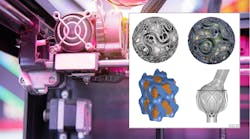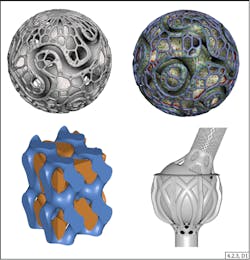The American Society of Mechanical Engineers (ASME) says it recently published an updated standard based largely on research by the National Institute of Standards and Technology (NIST), and it includes language regarding 3D printing. The standard, titled Y14.46 Product Definition for Additive Manufacturing, identifies important features unique to 3D printing and outlines how they should be documented.
The guidance in the new standard should help engineers in a broad array of industries more effectively communicate with manufacturers, product inspectors and others. Its widespread adoption could make it easier to use 3D printing on a larger scale, unlocking the environmental and economic benefits associated with the technology.
“The industry is in a digital transformation right now, moving away from physical 2D drawings, and additive manufacturing is one of the catalysts because it requires digital 3D models,” says Fredric Constantino, an ASME project engineering advisor. “And if you’re working on one of those models, this standard will guide you in making it understandable to 3D printers and others.”
In subtractive manufacturing, a common production method, machines carve parts from blocks of raw material according to instructions, which can be outlined in digital or physical 2D drawings. In contrast, additively manufactured products take shape from the ground up, as printers lay down one layer at a time, fusing them into a predetermined shape that can only be dictated by a 3D model.
In addition to producing less waste than subtractive methods, 3D printing can also create more complex parts, such as those that are not completely solid but partially hollow, filled with a meshwork that could come in many forms.
“Additive manufacturing has opened the door to a lot of unique design opportunities for engineers, but that freedom also creates challenges in communicating complex designs,” says NIST mechanical engineer Paul Witherell.
Back in 2021, ASME responded to this lack of consensus by forming a committee of several dozen engineers from industry, academia and the federal government. The group, co-led by Witherell through 2019, sought to create a uniform way to define 3D-printed products.
“We weren’t looking for ad hoc solutions. We were looking for solutions that could be standardized and implemented by the community to address these challenges with communication,” Witherell recalls. “We already know we can make good parts with additive manufacturing. Now the goal is to make lots of parts with additive manufacturing, and this is a necessary step.”
The committee developed the standard over the course of several years, drawing on input from 3D printing experts and NIST research. They also incorporated feedback on a draft version of the standard released in 2017
With the new guidance, the group introduces concepts that address not only the nuances of 3D printing designs, such as their potentially intricate internal geometry, but the peculiarities of the printing process. Factors, including the print orientation and whether temporary structural supports are printed, can influence the strength, durability and other properties of the final part.
Since printers need digital product information to be presented in a particular way, the new standard also includes a section on how to package 3D model-based data so that it’s machine readable.
Designers are meant to reference the new standard along with several previously established standards, which cover basic design considerations relevant to a broad array of manufacturing methods.
“Some of ASME’s other standards go 10 years, 20 years without revision, but additive manufacturing is advancing so rapidly. We aim to keep pace by adding to this standard as time goes on,” Constantino said. “We expect it to evolve quickly.”
For more information, visit ASME’s Additive Manufacturing Collection and NIST’s Measurement Science for Additive Manufacturing Program.

